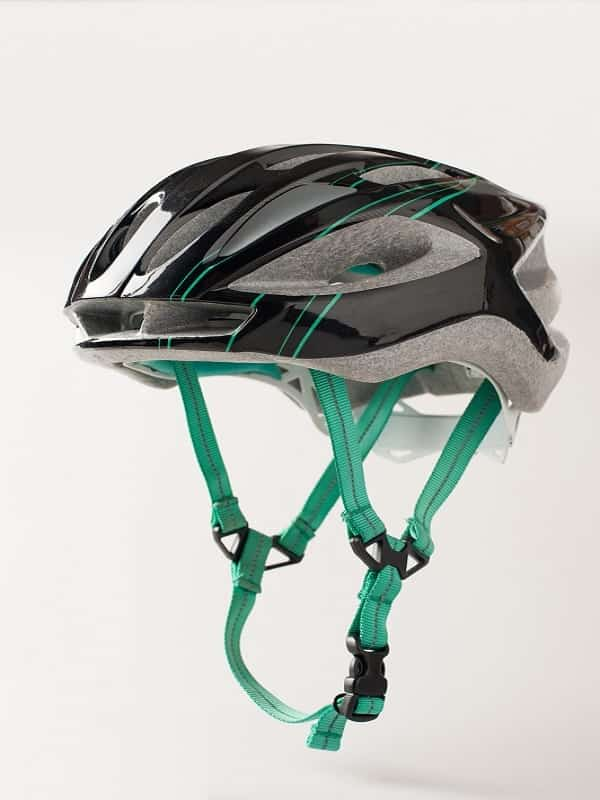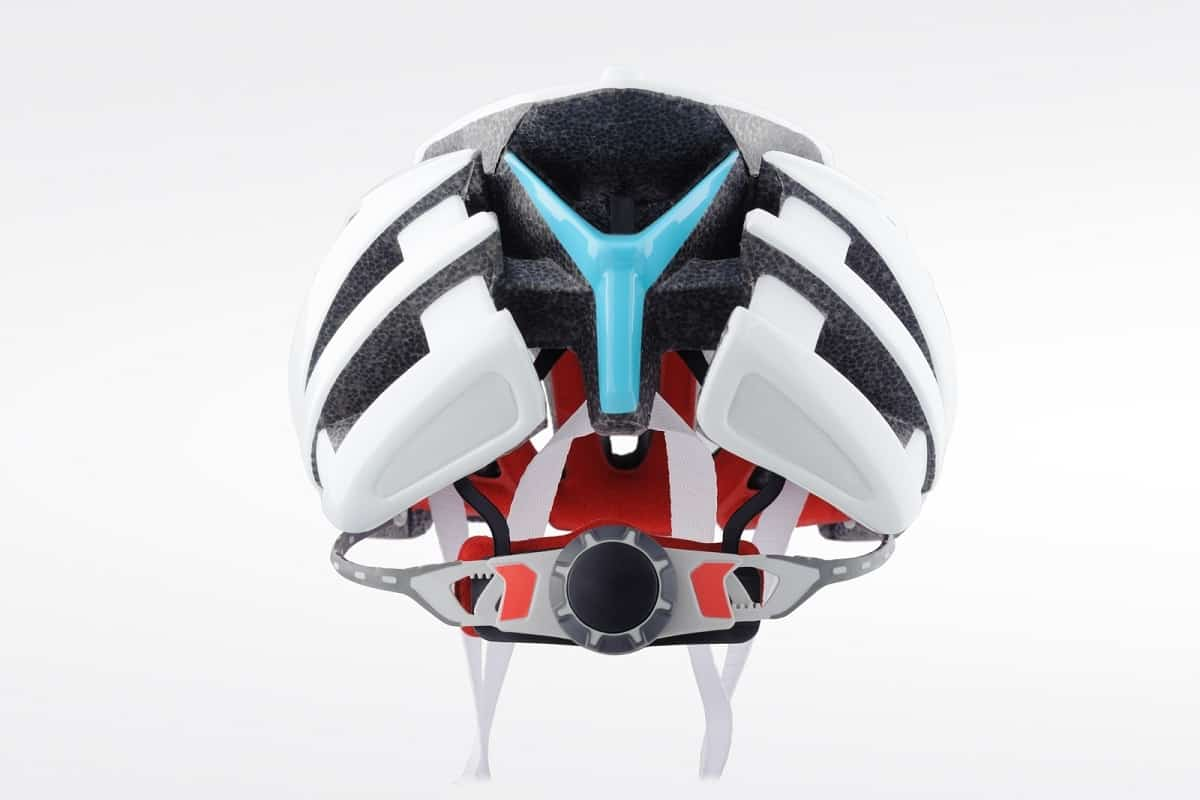What Are Bike Helmets Made Of?
Bike helmets are an important piece of protective gear for cyclists. While the focus on helmet design is often directed towards the outer shell and inner foam liner, the materials that make up these components are just the tip of the iceberg. To truly understand what bike helmets are made of, one must examine all five parts that comprise them.
Overall, the question of what are bike helmets made of is a complex one that requires a detailed understanding of the various components and materials involved. By examining each of these components in turn, cyclists can gain a greater appreciation of the engineering that goes into creating a safe and effective bicycle helmet.
KEY TAKEAWAYS
* There are five parts to a standard bike helmet.
* An Outer shell which is usually made of ABS (Acrylonitrile butadiene styrene) or Polycarbonate.
* The inner Foam liner made from EPS (expanded polystyrene).
* A Fit system which could be as simple as extra padding, or a rear dial type of system.
* The all important chin-strap and its plastic buckle.
* An optional MIPS (Multi-directional Impact Protection System) liner for added safety.

Canva.comDisclosure: As an Amazon Associate, we earn from qualifying purchases. Disclosure Statement.
Page Content
What Are Bike Helmets Made Of?
At first glance, it may not seem like there are many components to a bike helmet. However, upon closer inspection, it becomes clear that the helmet is made up of a complex series of layers and materials. In addition to the outer shell and inner foam liner, there are also straps, buckles, and ventilation systems that all play a crucial role in the helmet’s effectiveness.
The outer shell of a bike helmet is typically constructed from a polymer material that is known for its durability and impact resistance. The foam liner on the inside of the helmet serves a similar purpose, but is made from a different type of plastic that is designed to compress upon impact and absorb shock. Together, these two components provide the essential protection that every cyclist needs.
In addition to these core components, you have the chin strap and buckle which are often made of nylon with a plastic buckle. Then there’s the fitting system with its plastic dial. There are also a variety of optional features that can be added to a bike helmet.
Bike Helmet Material
Bike helmet manufacturing is a highly specialized process that can vary significantly between different brands and models. Unfortunately, the market often prioritizes visual appeal over functional safety, and many consumers choose to purchase helmets based on their aesthetic appeal alone.
For example, it’s not uncommon for parents to select Disney “Barbie” bike helmets for their children, without considering whether they meet the industry’s safety standards.
Nonetheless, there are many different types of bike helmet material required for the various parts of a bike helmet which are outlined in the following section.
RECOMMENDED: Best Affordable MIPS Bike Helmets
Parts Of A Bike Helmet
A bike helmet is made up of several parts, and when you break it down into its individual components, each part has its own unique features. Let’s delve into each of the five parts of a bike helmet and their respective sub-parts.
Helmet Shell
The helmet shell is the outermost layer of a bike helmet. Most bike helmet shells are made of polycarbonate, but some have an ABS shell, while the cheapest ones are made of PVC. These different types of polymers vary in cost of raw materials and durability, which affects the helmet’s price.
Polycarbonate and ABS shells often have the EPS liner molded together with the shell in a process called in-mold construction, which creates a stronger, more durable helmet.
In contrast, PVC helmet shells are usually made separately from the EPS liner and then glued together.
EPS Liner
The EPS liner is the softer, impact-absorbing foam material that sits inside the helmet shell.
It is molded directly into the shell of most helmets during the manufacturing process and provides the largest percentage of protection.
EPS stands for Expanded Polystyrene, but there are several variables within that single property.
Cheaper bike helmets may use simpler manufacturing methods to alter the EPS liner, just like cheaper helmets use PVC for the shell.
The EPS liner provides internal impact resistance, and may be a different thickness at different parts of the helmet where additional protection is necessary.
Helmet Padding
The helmet padding is additional padding that serves two potential functions.
While the liner pads aren’t necessarily designed for impact resistance, they may contribute to it indirectly.
Some helmets come with removable padding for fitting purposes, which can be added or removed as necessary.
Depending on the material of the liner pads, they may also be used to wick away moisture, a feature found in premium helmets designed for competitive cycling.
MIPS Liner
MIPS (Multi-directional Impact Protection System) is designed to reduce the rotational force of impact caused by oblique or angled impacts. While not all bike helmets have this feature, it should be more widespread.
MIPS is an additional liner designed to grab the head and force it in the direction of the rotational impact to prevent the brain from bouncing around inside the skull.
The helmet’s design with MIPS includes a thin, yellow polycarbonate layer called a slip-plane between the EPS liner and the rider’s head.
The MIPS slip-plane attaches to the inside of the helmet with elastomeric attachments that can move slightly in any direction.
Our article, ‘Is MIPS Worth It’, is a good read that will help you decide if you really need MIPS in your bike helmet or not.
Bike Helmet Chin Strap
The bike helmet’s chin strap is usually made of nylon or polypropylene and secures the helmet to the head with dual clasps on either side and a single clasp in the middle, to the left or right of the chin.
This content was originally published on headsdontbounce.com. If it appears on another website, it is a violation of the copyright owned by headsdontbounce.com.
Bike Helmet Strap Divider
The upper part of the chin strap separates in a Y-shape, running one side behind the ear and the other side in front of the ear, on both sides of the head.
This redirects the force of the chin strap to the whole of the helmet and can sometimes be adjusted depending on the manufacturer’s design.
Bike Helmet Buckle
The bike helmet buckle is typically made of plastic or nylon strapping. The nylon type uses a “pinch release” mechanism, known as Fastex.

The other buckle, Fidlock, consists of a magnetic locking feature that automatically locks into place as soon as the magnetic fields make close contact. While the magnet holds it securely while riding, unfastening is as simple as a twist.
Bike Helmet Fit System
Finally, the fit system is the adjustable part that sits almost directly behind the skull, where the brain stem connects to the brain.
It’s known as an occipital stabilizer and is usually designed to tighten or loosen the fit with a clockwise or counterclockwise turn.
Each part of the bike helmet is essential in ensuring safety and comfort, so it’s important to understand the function of each component when purchasing a bike helmet.

Summing Up
In conclusion, the manufacturing of a cycling helmet involves a variety of parts, each with its own specific functions and features. To gain a comprehensive understanding of the inner workings of a bike helmet, you can refer back to the detailed information provided above. By doing so, you can have a thorough grasp of the complex construction of a fully assembled bike helmet.
I hope we have answered the question of ‘what are bike helmets made of’ to your satisfaction. If you enjoyed this article, take a look at the related reads below for some more interesting reads!
Related Reads:



